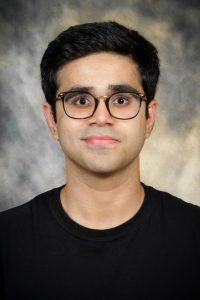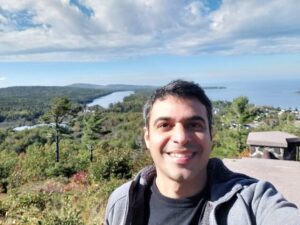
Non-Gaussian Light Scattering Phenomena and Applications
Reality is rarely deterministic and usually fluctuates. We try to make sense of the fluctuations arising from the interaction of light with disordered media to learn about the media, the fluctuations, or sometimes both! We employ light scattering based methodologies to perform simple yet powerful measurements that provide robust statistical information, even in noisy environments. Furthermore, our understanding of disordered media has also enabled us to develop materials with tunable disorder, optimizing their scattering efficiency for various applications.
I’m a theoretical experimentalist pursuing my PhD in Optics under the guidance of Professor Aristide Dogariu at CREOL. I received my Bachelor’s in Electrical Engineering with a focus in Photonics from Virginia Tech in 2020. My work involves developing methodologies for both characterizing and controlling complex media in noisy environments. Moving forward, I intend to continue working in the field of Biomedical Optics and hope to translate simple yet robust scattering based technologies to the clinic.
Runners-up

Programmable Integrated Topological Photonics
Programmable integrated topological photonics leverages reconfigurable photonic circuits to explore topological and non-Hermitian physics with unparalleled control. Traditional photonic circuits lack reconfigurability, limiting precise control of system parameters, especially in the presence of fabrication imperfections. By utilizing programmable photonic platforms, our group have previously demonstrated their potential in studying Hermitian topological models and coupled systems. In this talk, we discuss the first experimental realization of a non-Hermitian topological model where topology arises purely from optical loss modulation—an achievement unattainable in non-reconfigurable photonic circuits due to the challenges of precise loss engineering. Our findings reveal emergent topological edge modes in both periodic and quasi-periodic configurations, demonstrating their robustness against loss disorder. This work underscores loss engineering as a powerful tool for inducing topological behavior, opening new avenues for topological photonics, non-Hermitian physics, and their applications in photonic technologies.
Amin is currently a PhD student in Dr. Andrea Blanco-Redondo’s Quantum Silicon Photonics group. Amin received his Bachelor’s degree in Physics at Shahrekord University, and then received a Master’s degree in Physics at the University of Tabriz. His research interests include quantum photonics, Non-Hermitian systems and topological photonics. Amin has authored 12 journal and conference articles with over 120 citations.